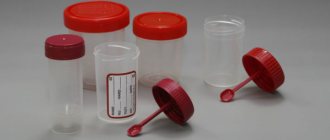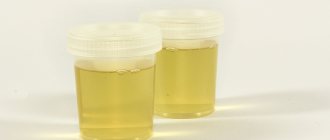The appearance of black threads in the stool: what is it?
Black dots, grains, strings in stool are particles of digested or undigested food. In some situations, the strings can look like tiny worms. In such situations, do not be afraid. These are not helminths, but simply indigestible iron compounds.
At a tiny age, children get to know the world through various sensations, so they put everything in their mouth to find out the taste.
For this reason, the following may be hidden under black threads in the baby’s stool:
- Hairs;
- Animal wool or artificial wool from toys;
- Indigestible food;
- Lint from fabrics. It is very important to monitor what the baby puts in his mouth and keep the house clean.
And if your child has green diarrhea, we recommend reading our other article: Green diarrhea in children: why is it dangerous, why does it occur and how to treat?
There are black strings in the baby's stool
Until three months, the baby’s feces have not yet formed. It comes in green, yellow and even black. Quite often, black threads are visible in the stool. Due to the fact that the intestines of infants are not fully developed, there is nothing special or critical about this.
When a baby is breastfed, such elements are noticed in the stool due to the mother's diet. If a mother consumes a lot of bananas, then the mammary gland is saturated with a large amount of iron. Thus, the child’s body, although not in significant quantities, is saturated with it and is not able to digest it.
Also, black threads can appear due to the baby’s diet, for example, when complementary foods include:
And that's okay. After birth, the baby often poops dark-colored feces. Due to the fact that after childbirth the intestines and digestive organs are cleansed. Then the color changes slightly, but the black threads may remain. This can be observed for a long time until the intestines are fully formed.
When introducing complementary foods to babies, changes are often noted in the feces after the first consumption of banana, persimmon, or pear. This does not mean that the baby cannot accept these products. The fact is that the digestive system cannot completely digest them.
In infants, similar elements may appear in the stool due to mixtures. They contain calcium, iron and other substances. When a child is on artificial nutrition, black threads may appear for obvious reasons.
Black feces in a healthy child
Black feces in a child are most often a reaction to food and medications. It is necessary to clarify what the baby ate in the previous 3 days and monitor feces in the near future. Food stays in the digestive system for about 2-3 days, so your baby may have black stool for several days after eating certain foods.
In a formula-fed infant, black or green stool may appear after the introduction of a formula with a high iron content. Once in the body, it oxidizes due to a reaction with gastric juice containing acid. As a result, the feces turn black.
If a child takes vitamin supplements with a high iron content or iron supplements, his stool will turn black. The body does not absorb the substance in full; after digestion is normalized, the coloring will stop. This phenomenon is not a pathology, so there is no need to exclude foods or interrupt treatment.
Activated carbon is a medicine used to improve digestion. It acts as a sorbent, absorbing toxins. By absorbing a large amount of liquid, the tablets increase in volume, but their color does not change. Activated carbon colors stool because it cannot be digested and does not enter the blood, but comes out, combining with feces. After stopping the intake, the color of the stool returns to normal.
Some medications can turn stool black. As a rule, the instructions for the product indicate in the side effects that the active substance changes the color of feces. These include:
Causes of black threads in stool
Every parent is easily able to identify the causes of black strings in the stool. To do this, you just need to remember what the baby ate and what medications he was given.
Black strings appear in stool when consuming the following foods:
- Persimmon;
- Pineapples;
- Strawberries, black currants, blueberries;
- Beet;
- Bananas;
- Kiwi;
- Apples;
- Grapes, or rather grape seeds;
- Poppy.
Also, black threads may turn out to be various foreign objects. Breastfeeding babies can eat their hair because during development they try to taste everything. Babies usually have thin hair that is not digested in the stomach. For this reason, they appear in the feces in the form of black threads.
When there are animals living in the house, especially dogs and cats, it is necessary to clean and look after them very well. The baby can eat the wool. This is dangerous because it can cause serious consequences in the digestive system. In such a situation, not only black strings can appear in the stool.
This applies to all objects that may end up in the baby’s body. In addition to black threads, dots, pieces of indigestible food, and grains may also appear.
Medicines that cause the appearance of black threads
Children's medications are usually excreted naturally in the feces. With such a process, certain changes in the stool may be observed.
The appearance of black threads is possible after treatment:
- Using sorbents;
- Agents that increase hemoglobin;
- With the use of vitamins with sufficient amounts of microelements.
Treatment with sorbents may cause stool to turn black. This is a normal phenomenon, because all waste and toxins leave the body. In such a situation, you do not need to stop taking sorbents.
When bacteria are prescribed to a baby to populate the intestinal microflora, black threads may appear in the stool. This happens because the balance of bacteria is adjusted.
When using products with iron, similar phenomena may also occur. Children often develop anemia. Hemoglobin levels can be restored with the help of iron, consumed in the form of syrup or tablets. For this reason, black threads appear in the stool after eating it, and this is considered normal.
Is this normal?
For babies this is an ordinary physiological process. During the process of intestinal formation, children's feces vary. The appearance of blackheads is also considered normal. Especially during the inclusion of complementary foods. Over time, the body gets used to certain foods, and with age, the digestive system copes well and completely with digesting them.
The presence of black threads in the stool does not require a trip to the doctor and special treatment if the baby feels normal.
Based on the feces leaving the body, one can draw a certain conclusion about the processes occurring in it. That is why it is so important for parents to regularly monitor the type of children's excrement, its consistency, composition, possible inclusions, etc.
Particles of black or white color with a consistency that is not typical for normal feces, especially in a small child, cause understandable anxiety in parents.
What to do? To begin with, we recommend reading an article from the main institute of parasitology of the Russian Federation. This article reveals a method by which you can cleanse your body of parasites, without harm to the body. Read the article >>>
You can often see this in a child’s stool
The first thing that comes to their mind is worms. Young children are especially susceptible to helminthic infestation, as they rarely observe personal hygiene rules. However, do not rush to panic - in most cases, if you find black threads in a child’s stool, as in the photo below, this has nothing to do with worms.
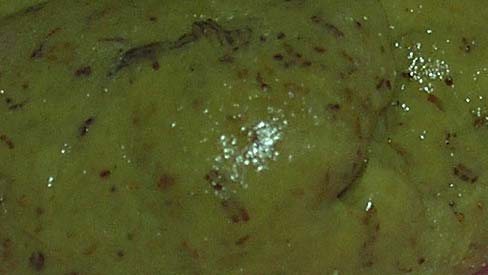
Another photo of feces with unusual inclusions
Please note that science does not know of any human parasite that has a thread-like shape and a dark color. Typically, worms have a whitish-yellowish coloration, because, living inside the human body, they do not have to attract individuals of the opposite sex with the help of color or frighten enemies with it. So the idea of black worms can be safely discarded.
Of course, under no circumstances should black threads in the stool be ignored. Try to remember what your child ate in the previous three days and carefully monitor the appearance of stool over the next few days, and also write down everything you give your child. This is especially true for infants and children about one year old, who are given complementary foods in the form of fruits, berries, etc.
Black dots on stool - what does it mean?
Eating persimmon can cause the appearance of black spots in the stool.
Black dots on stool may look like this:
- Interspersed
- grains
- Thin threads
- grains
- grains of sand
All these options have one common name - blackheads. Usually, black spots on stool indicate partially digested or undigested elements of food or medicine.
For example, black dots in feces can be seeds from eaten kiwi, raspberries, currants, poppy seeds, grape seeds, etc. Most often, the presence of blackheads can be the result of foods eaten, such as:
- Banana
- Apple
Sometimes small children, after eating a banana, may find thin strings in their stool that look like. Pay attention to this and don’t panic right away.
Noticed a mistake? Select it and press Ctrl+Enter
to let us know.
Tell your friends!
Share this article with your friends on your favorite social network using social buttons. Thank you! Contents:
2. Continue monitoring the color and consistency of stool for a few more days.
Black coloring of stool that is not associated with any serious illness usually changes to a normal brown color within 1-2 days after stopping taking foods and medications with coloring properties.
Black stool associated with disease, on the other hand, may persist for several days and may recur from time to time for no apparent reason.
3. Notice how the person feels?
Try to assess the well-being of the person who has black feces. Does he seem sick? How has his health changed in the last days, weeks and months leading up to the appearance of black stool? Pay attention to what this person has suffered from in the past.
In cases where the appearance of black stool is caused by medications or food, the person usually feels completely healthy.
On the contrary, if a person feels unwell (for example, he has a stomach ache, heartburn, nausea, vomiting, prolonged constipation, bloating that gets worse over time, anemia) and has previously suffered from diseases such as stomach ulcers, cancer, hepatitis, cirrhosis - one can suspect that the appearance of black feces in him is a sign of complications of one of the diseases mentioned above.
What could be black strings in a child’s stool?
The structure of the digestive system in children is somewhat different than in adults, and it happens that some foods are not completely absorbed.
Most often, black strings appear in poop for the following, completely natural reasons:
- The baby was fed a banana, apple, pear, kiwi or prune, and not necessarily on that day, maybe the day before. These products contain a lot of iron, and the child’s fragile gastrointestinal tract is not yet able to ensure its complete absorption, which manifests itself in the form of dark threads in the stool. Over time, iron absorption normalizes;
- A similar effect is achieved by baby food fortified with iron;
- If the child takes certain medications, primarily iron-containing ones, which are often prescribed, for example, for anemia.
Black strings in stool - what are they, reasons for their appearance
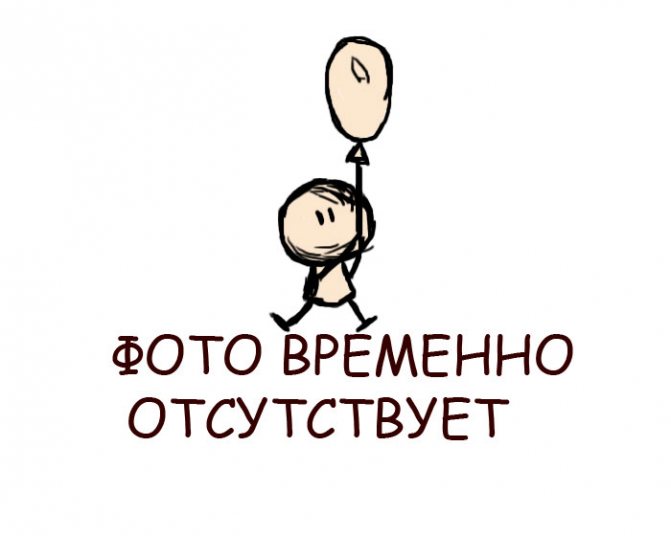
Greetings, dear and beloved reader, if you are interested in the cause of black strings in stool, then most likely you have personally encountered this and may have been shocked. The first thing that might come to mind is that these are black worms in the feces. Well, let's check the version about worms. Take a close look at your poop, are those black sticks moving in your stool? No? It’s strange, but it seems like they should. Or maybe they died and that’s why they turned black? Maybe so. But in fact, these are not worms at all!
There are no black worms in feces. In nature, in principle, such worms do not exist.
So if it’s not black worms that have overcome our feces, then what is it? Where did it come from? In fact, black spots in poop are quite common. These inclusions are called differently - worms, sticks, threads, dots and inclusions.
These inclusions in feces can be oblong, like threads, or very short, like dots. The length of the strings in feces is usually about 1-2 cm. They are most often found in children.
Doctor Komarovsky's opinion
Dr. Komarovsky, who is perhaps the main authority in the field of pediatrics for all mothers, believes that when examining a child under one year old, a pediatrician should definitely inquire about his stool, since the characteristics of the stool are a very informative indicator of the baby’s health.

Changing the nature of stool, according to Dr. Komarovsky, is a completely natural process, and it begins from the moment of birth. First of all, meconium comes out of the newborn’s body, and then the characteristics of feces are determined by the type of feeding - breast or artificial.
In general, normal stool in infants is a flexible concept, since each baby may have its own norm. It is important to carefully monitor both the child as a whole and his stool. Based on its appearance, certain conclusions can be drawn:
- The appearance of a large number of white cheesy lumps indicates overeating - an excess of breast milk or formula that the digestive system does not have time to process.
- The presence of mucus in the stool of infants, according to Dr. Komarovsky, is normal, but he recommends monitoring the frequency of mucus and its volume and carefully monitoring the child’s general condition.
- If the feces have turned black, Dr. Komarovsky recommends urgently consulting a doctor. This color may be a consequence of taking certain medications, for example, antibiotics or activated carbon, but if the child did not take them, then the pediatrician must figure out the reason.
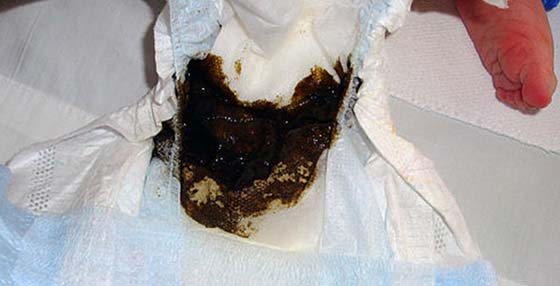
If your child has this color of stool, consult a doctor immediately
Abnormalities in stool
Parents constantly monitor the condition of the baby's stool. By its color and consistency, you can promptly identify problems with the functioning of the digestive system, as well as draw a conclusion about the presence of some abnormalities. White or black spots may appear in your baby's stool.
Stool with white spots in a child is not uncommon. They usually resemble cheesy lumps.
On a note. There is a big difference between white inclusions and veins. The appearance of the latter is an alarming signal. You need to see a doctor urgently.
If white spots appear during breastfeeding, this indicates a high fat content of mother's milk.
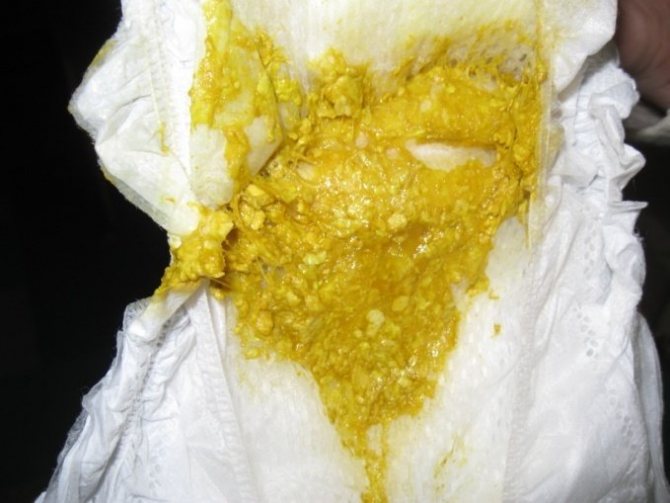
The appearance of cheesy white lumps indicates overeating
With artificial feeding, white spots may indicate a change in diet (this is a change in formula, the appearance of new foods in complementary foods). This condition indicates that the changed diet is not completely absorbed by the child. Only after the inclusions have disappeared can new products be introduced.
Most often, white lumps in stool indicate banal overeating. In this case, the white impurities resemble a curdled mass.
If white grains appear in your child’s stool, as well as certain accompanying symptoms, you should consult a doctor:
- Lactose intolerance. Additionally, there are frequent bowel movements (more than 10 times). Feces are liquid and foamy. Medical consultation is required. If the diagnosis is confirmed, then the regular mixture is replaced with a lactose-free one. When breastfeeding, lactase enzymes are added to each serving of milk.
- Dysbacteriosis. Large white inclusions resemble lumps in shape. There is green mucus in the stool, and the stool has an unpleasant odor. Consistency and color are constantly changing. After the examination, the pediatrician will prescribe a comprehensive treatment to restore the intestinal microflora.
- Helminthic infestations. This is a rare occurrence for infants. The most common lesion is pinworms; they are the ones that curl into balls and are visible in the feces in this form. Sanitation will be required, as well as treatment with special medications for all family members.
- Infectious inflammation. Grains, white mucus and lumps in the stool are accompanied by severe pain in the tummy. There may be a fever, the baby may cry, or there may be weight loss. Immediate medical attention is required.

If the baby’s general condition worsens and spots appear in the stool, be sure to consult a doctor.
To avoid such problems, parents should constantly monitor the condition and behavior of the baby. It is important to maintain personal hygiene and sanitary standards. The baby's body is very susceptible to viruses and diseases.
Black spots can appear in a baby's stool for various reasons. In rare cases, they indicate serious violations. Most often, this is a sign of an infant’s digestive system that is unresponsive to new foods or the result of taking medications:
- Excess iron, which enters the child's body as part of a mixture or vitamin complexes and is not absorbed, can be excreted during stool. Most often these are small black inclusions in the form of balls.
- New food products. Not all foods are digested by the fragile stomach of a little man. For example, seeds, berries and fruits may be partially excreted undigested.
- In some cases, the appearance of blackheads may indicate a disease. Then the change in the color of the stool will be accompanied by other symptoms: a change in the child’s behavior, increased body temperature, vomiting, nausea, and abdominal pain.
On a note. Black strings, balls, dots never mean the presence of worms. Parasites with this color simply do not exist.
The cause of a child's stool turning black, as well as the appearance of dark spots in it, can be due to the use of medications, these are:
- antibiotics;
- ibuprofen;
- Activated carbon;
- bismuth-based preparations;
- paracetamol.
After some time after taking the medication, the color of the stool should be restored.
Why might a child have black strings in his stool?
What doctors say about treating parasites
Doctor of Medical Sciences, Professor German Shaevich Gandelman
Work experience: more than 30 years.
I have been detecting and treating parasites for many years. I can say with confidence that almost everyone is infected with parasites. It's just that most of them are extremely difficult to detect. They can be anywhere - in the blood, intestines, lungs, heart, brain.
Parasites literally devour you from the inside, at the same time poisoning your body. As a result, numerous health problems appear, shortening life by 15-25 years.
The main mistake is delaying! The sooner you start removing parasites, the better. If we talk about medications, then everything is problematic. Today there is only one truly effective anti-parasitic complex, this is TOXIMIN. It destroys and sweeps out all known parasites from the body - from the brain and heart to the liver and intestines. None of the drugs existing today is capable of this.
Within the framework of the Federal program, when submitting an application before June 10. (inclusive) every resident of the Russian Federation and the CIS can receive one package of TOXIMIN FOR FREE!
As you can see, most often the appearance of such threads in a child’s feces is associated with iron. When his body is fully formed and is capable of completely breaking down, digesting and assimilating complex or heavy substances that come with food, these phenomena will stop.
In the meantime, it can be considered completely normal if black strings, grains or undigested pieces of food are found in the diaper, especially if this happened after the introduction of a new infant formula with a high iron content. This is within the age-related physiological norm and does not require treatment; You should also not exclude this product from your baby’s diet.
Sometimes a one-year-old baby's stool color may change to black or black-green. This is again connected with his diet - the introduction of fruits and especially berries with intense color, such as blueberries, blackberries, red and black currants, and cherries. Juices and vitamins also contain a lot of iron, which is oxidized under the influence of gastric juice and gives stool an unusual color. Once you find out the reason for this, you should not exclude them from your diet.
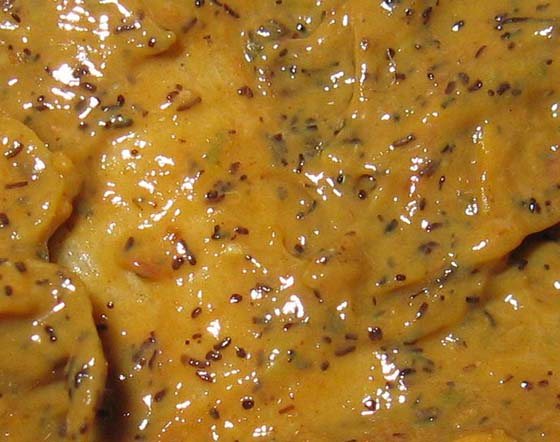
This is what an undercooked banana looks like
Very often the cause of this problem is bananas, which have a fibrous structure, so the black strings are most likely just undigested banana fibers.
Black threads, as well as various kinds of inclusions, grains, grains or grains of black sand are collectively called black dots. Sometimes it can just be raspberry, currant, kiwi seeds, grape seed particles, poppy seeds, etc.
Here are the traces the most common fruits leave in baby stool:
- Banana - thin black threads or dots like a poppy seed;
- Persimmon, kiwi - the same points;
- Chblocks, pears - black threads.
Black feces in a healthy child
Black feces in a child are most often a reaction to food and medications. It is necessary to clarify what the baby ate in the previous 3 days and monitor feces in the near future. Food stays in the digestive system for about 2-3 days, so your baby may have black stool for several days after eating certain foods.
In a formula-fed infant, black or green stool may appear after the introduction of a formula with a high iron content. Once in the body, it oxidizes due to a reaction with gastric juice containing acid. As a result, the feces turn black.
If a child takes vitamin supplements with a high iron content or iron supplements, his stool will turn black. The body does not absorb the substance in full; after digestion is normalized, the coloring will stop. This phenomenon is not a pathology, so there is no need to exclude foods or interrupt treatment.
Activated carbon is a medicine used to improve digestion. It acts as a sorbent, absorbing toxins. By absorbing a large amount of liquid, the tablets increase in volume, but their color does not change. Activated carbon colors stool because it cannot be digested and does not enter the blood, but comes out, combining with feces. After stopping the intake, the color of the stool returns to normal.
Some medications can turn stool black. As a rule, the instructions for the product indicate in the side effects that the active substance changes the color of feces. These include:
It is possible to defeat parasites!
Tips from our readers
I got rid of parasites in just a week! I was helped by a remedy that I learned about from an interview with a parasitologist.
Toximin® - a remedy for parasites for children and adults!
- Dispensed without a doctor's prescription;
- Can be used at home;
- Clears parasites in 1 course;
- Thanks to tannins, it heals and protects the liver, heart, lungs, stomach, and skin from parasites;
- Eliminates rotting in the intestines, neutralizes parasite eggs thanks to the F molecule.
A certified remedy recommended by helminthologists for getting rid of parasites at home. It has a pleasant taste that children will like. Consists exclusively of medicinal plants collected in environmentally friendly places.
There is a discount now. The drug can be obtained free of charge.
Hello, readers of the site about parasites Noparasites.ru. My name is Alexander Lignum. I am the author of this site. I am 23 years old, I am a 5th year student at the Kemerovo State Medical Institute. Specialization "Parasitologist". Consultation by phone: +7. More about the author>>
Causes of the phenomenon
Very often, the ignorance of many parents allows them to detect worms when they see black threads in their child’s stool.
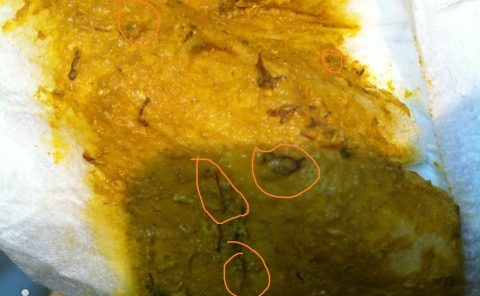
It is immediately worth noting that human parasites of a thread-like black color do not exist in nature. As a rule, these are white or yellowish individuals that do not need pigment in their body. They do not attract the opposite sex with provocative colors, nor do they take on a frightening appearance with the help of unnatural shades. From which one can make a logical conclusion that it is something else.
The reasons for black inclusions found in feces of completely natural origin:
- The digestive system in children is structured somewhat differently than in adults. Many foods are not always completely digestible.
- The appearance of black worms may occur during the period of the beginning of complementary feeding with food rich in iron. These can be apples, pears, bananas, kiwis. The child’s gastrointestinal tract does not allow this element to be completely absorbed and traces of it are visible in the feces. As the child’s body matures, the process normalizes.
- Taking some medications, especially those containing iron, leads to the formation of these dark-colored threads.
- Some baby foods fortified with iron have the same effect.
If you find black worms that look like threads, do not panic. First of all, analyze what you fed your child the day before.
Is this the norm?
The child’s body, which is not fully formed, is not able to completely break down, completely digest, or completely absorb complex or heavy substances that come with food. Therefore, you can often find pieces of food, grains or black strings in the diaper. This phenomenon is considered completely normal and disappears over time.

It’s another matter when this is accompanied by additional symptoms:
- High body temperature.
- Fever.
- Nausea.
- Diarrhea or constipation.
- Vomit.
- Colic.
- Skin redness, rash.
- Restless behavior and tearfulness.
- Sleep disturbance.
- Lack of appetite.
- Weight loss.
The reasons for this feeling may be poor digestibility of certain foods, an allergic reaction, intolerance to certain substances, or errors in feeding.
What to do?
If, during the next diaper change, black threads resembling worms are found, you need to pay attention to the following points:
- The emotional state of the child is smiling, playful, good mood.
- Physical well-being – no fever, soft, non-painful abdomen, clean skin, normal stool.
- Proper nutrition - no errors in feeding, regimen.
- Availability of certain products - apple, pear, banana, kiwi, persimmon.
If all these components are present, the appearance of black threads in the stool should not cause concern to parents; the child is completely healthy.
If you feel unwell and have dark threads in the form of worms for several days, you should consult your pediatrician. After performing a physical examination of the child and studying the tests, the doctor will be able to establish the correct diagnosis and prescribe the necessary treatment.
Until this moment, you should not mistake black threads in children’s stool for worms and self-medicate.
What to do if black spots appear in stool?
If you find dark specks in your stool, do the following:
- Remember and write down all the foods you consumed in the last three days.
Include medications, vitamin complexes and nutritional supplements in the resulting list. Think about what of this could end up in the feces in the form of dark inclusions. - Over the next few days, monitor the color of your stool.
If the cause of dark spots is food, after 2-3 days the stool will return to its normal brown color. If the atypical color of the stool is associated with pathologies in the body, the black spots will not disappear. They may also disappear for a short time and then return for no apparent reason. - Pay attention to how you feel.
If there are no other symptoms and you have nothing to complain about, there is most likely nothing to worry about. But if you have other problems with the gastrointestinal tract (constipation, diarrhea, abdominal pain, etc.), it is necessary to undergo a medical examination. - Such questions should be addressed to a gastroenterologist.
This is the doctor who treats digestive disorders. The specialist will conduct an examination and prescribe some tests.


